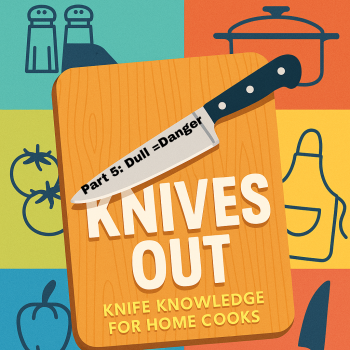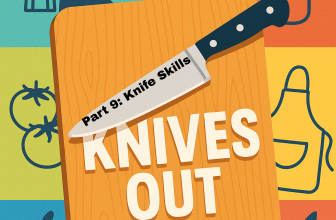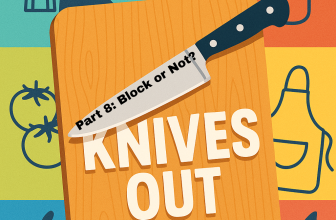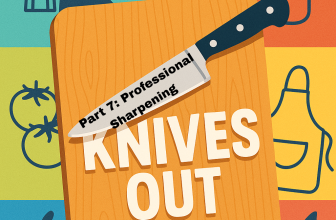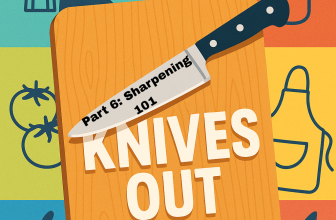Dull = Danger
A good knife is one of the best investments you can make as a home cook. But even the best knife is useless if it’s dull. In fact, a dull knife is more dangerous than a sharp one.
It seems counterintuitive, but dull knives cause more kitchen accidents than sharp ones. A dull blade forces you to press harder, which means if the knife slips, it’s more likely to cut you. Sharp knives glide through food with less force and give you better control.
Example: Ever tried slicing a tomato with a dull knife? Instead of cutting, the blade slides off the skin and very often right toward your fingers.
Injuries
Most knife injuries (94%) are lacerations.
Fingers and thumbs are the most commonly injured areas (about 66% of incidents).
Some sources estimate that 350,000 people per year in the U.S. go to the ER due to knife injuries.
Signs Your Knife is Dull
- Struggles to slice through tomatoes or citrus.
- Smashes herbs instead of cleanly cutting them.
- Slips on the onion skin instead of biting in.
- Requires extra force to cut through vegetables or meat.
Why Sharpness Improves Cooking
- Efficiency: Less effort, faster prep.
- Precision: Cleaner cuts mean even cooking.
- Food Quality: A sharp knife doesn’t crush or bruise ingredients. Herbs stay fresh and vibrant, meats stay juicy, bread stays intact.
Quick Sharpness Test
Try the paper test: hold a sheet of paper upright and slice downward with your knife. A sharp blade will glide right through. A dull one will snag or tear.
Cooking is safer, faster, and more enjoyable when your knives are sharp. A dull knife not only slows you down but also puts you at risk. Keeping your knives sharp isn’t just maintenance. It’s an essential part of being a smarter home cook.
Read More
Part 1: The Basics
Part 2: The Essentials
Part 3: Spend Wisely
Part 4: Storage Matters
Part 6: Sharpening 101
Part 7: Professional Sharpening
Part 8: Block or Not?
Part 9: Knife Skills

